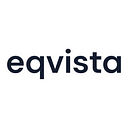Important Startup Valuation Methods
Startup valuation is a significant process in estimating your business value in terms of performance, profitability, management, and accounting. It gives you insights into the scope of your company in the future, the expectations of investors, and market requirements. If you are looking for more funds to raise your company capital or need angel investors to fund your business, you need accurate reports of your company valuation to initiate the process. While startups are tough to be evaluated accurately since their operating income and sales history are relatively new, there are a few valuation methods that can bring close-to-accurate reports.
Venture capital firms and angel investors employ multiple methods to find the finance and operational value of a company and estimate how much it can generate in the future. This way, investors can estimate how much return on their investment they can expect in a stipulated time. If you are a business owner, you can use these valuation methods to compare your costs and revenue and understand if the business is running profitably. Since the valuation process is based on metrics and predictions, professional guidance is recommended. This article throws light on the most important valuation methods you can use to analyze the company’s performance.
Discounted Cash flow method
Discounted Cash flow method is the most common valuation method for startups. It is completely based on market analysis to foresee how well a firm may develop and generate returns in the future. Here, you apply a discount rate i.e, an expected ROI (return of investment) to your prediction and arrive at a possible estimate to calculate the DCF.
If the obtained DCF value exceeds the investment rate, the returns can be positive.
And if the value is below the investment rate, the returns cannot be promising. DCF method of valuation is ideal for firms with stable income or predictable cash flow.
The only drawback of the DCF method is that it is entirely dependent on the analysts’ predictions and assumptions. And also DCF may not be the best option for businesses with unstable models or negative revenue.
Berkus Valuation Method
This method of business valuation created by Dave Berkus is ideal for startups that have not started generating revenue yet. You have to consider 5 main concepts to assess startup value — Technology, basic value, Implementation, Networks in the market, and Sales. The net value of these concepts must have a positive impact on the net value of the company. To keep pace with the evolving market trends, these values must be periodically updated and modified. This helps the owners to prevent errors in valuations based on assigned revenues.
The only drawback of the Berkus method is that it only goes up to the five concepts mentioned to evaluate a business. However, this limited scope can be a reliable option for startups in their pre-revenue stage.
Cost To Duplicate Approach
In this method, you add market values to all your physical properties and costs required for operational activities like research and development, patent price, and production. You analyze how much investment is required to set up another similar company as yours from scratch. It is based on the expense records of your company and is objective to an extent. It works out for investors who are not ready to make an investment that exceeds market value.
The main concern with the cost-to-duplicate method is that it does not consider the potential of the company in the future like sales generation and profit analysis. It also does not value intangible assets like customer relationships or brand reputation, as they have the potential to generate revenue in the future.
Risk factor summation method
This method is also highly dependent on assumptions about potential risk factors linked to the business. It determines how risky your business is by comparing it with the competitors in the market. There are 12 risk factors that the method considers such as the Business stage
- Legal or political
- Manufacturing
- Management
- Litigation
- International
- Competition
- Technology
- Marketing
- Potential lucrative
- Capital/funding
- Reputation
The method anticipates all of the mentioned risks and analyses how they may affect the ROI.
Venture Capital method
This is another popular startup valuation method. It assumes the exit stage of a company to arrive at the anticipated results. You begin by calculating the firm’s terminal value by determining revenue multiples of your business. Firstly determine the terminal value of your company to understand the exit multiple. The exit multiple calculations are also used in the DCF method. Then you estimate the expected Return on Investment (ROI).
Estimated ROI = Terminal value / Post Money valuation
You can calculate post-money valuation by dividing the terminal value by ROI. The difference between your initial investment and post-money valuation is your pre-money valuation.
Book value method
The book value method determines the net assets of a startup and liabilities to arrive at a final value. It examines your balance sheet entries, including receivables and subtracts liabilities such as debts and expenditures. It is similar to the cost-to-duplicate method but considers only the assets and liabilities.
Summing up
If you are a startup founder, you will need valuation reports to pitch to the investors for funding purposes. Not just that, a valuation report helps you develop revenue generation strategies and better business planning. It is important to remember there is no one size fits all valuation method for a company. You need to combine different approaches and arrive at a standard value. This is exactly why professional service providers like Eqvista can be of great help. We offer research-backed consultations and valuation strategies that suit your company’s needs. If you have queries on anything startup, feel free to contact us!
